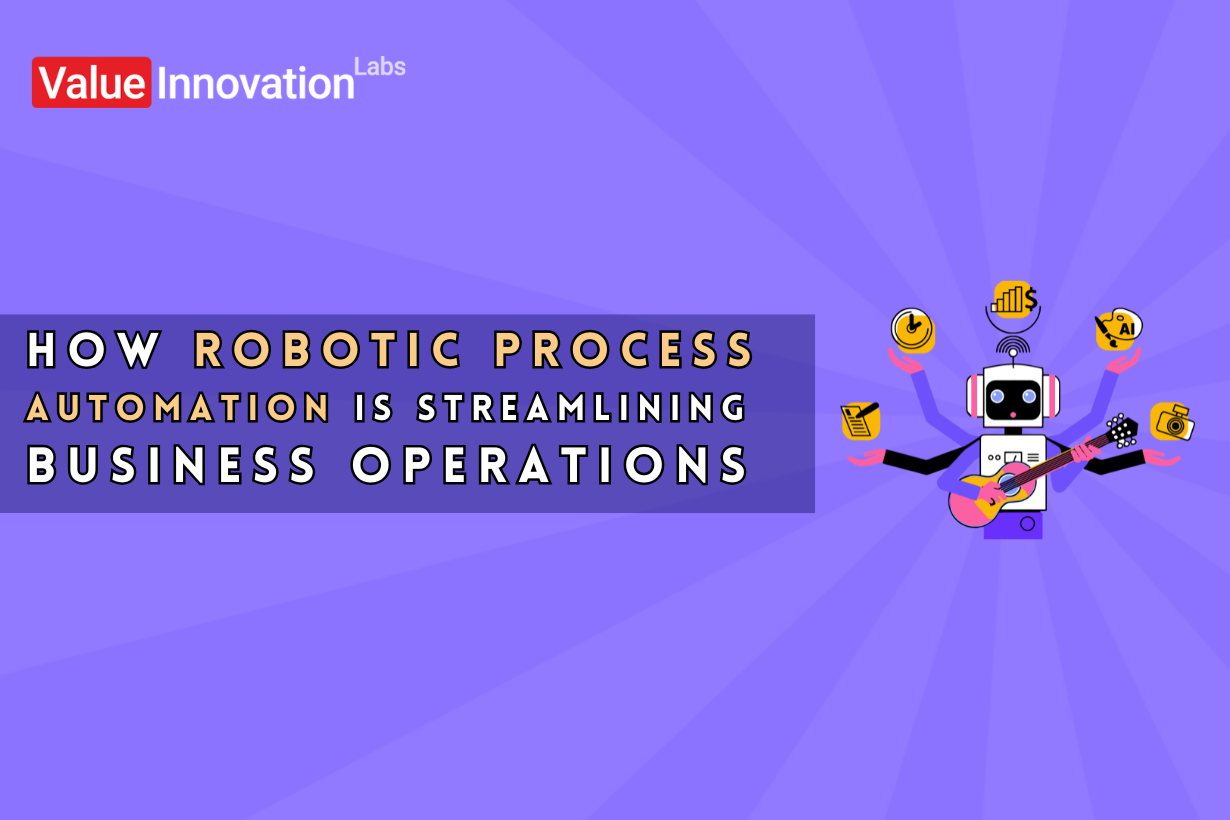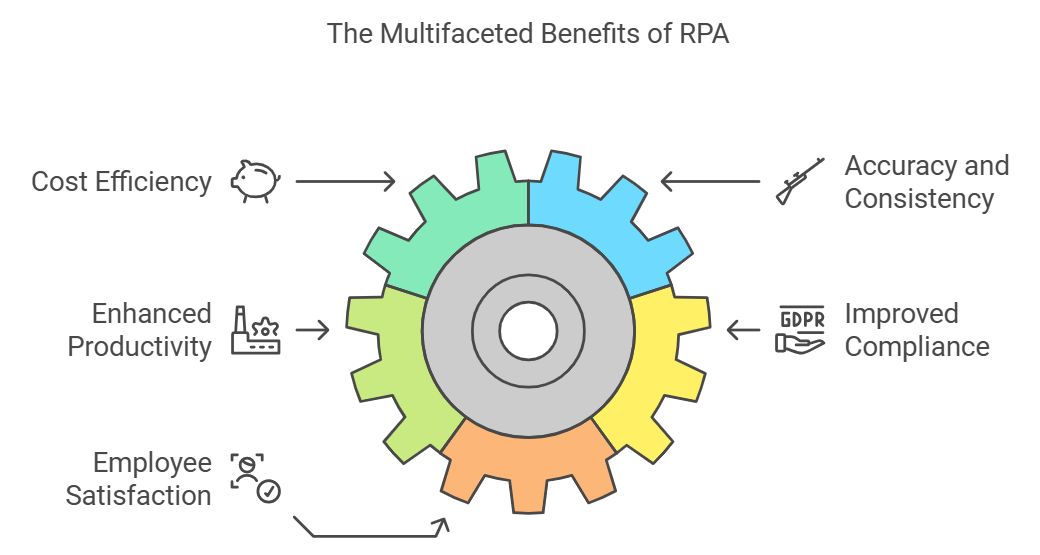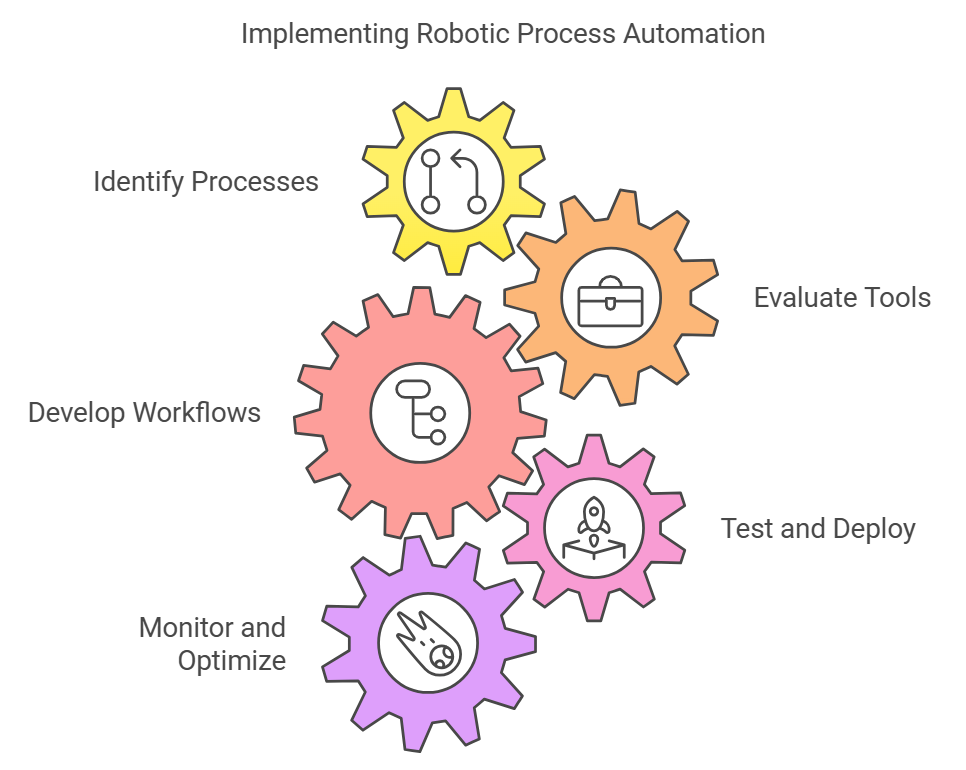
How Robotic Process Automation is Streamlining Business Operations
- by mayank.thapa
In today’s world represented by various digital qualities, companies always look for ways to make operations more effective, less costly, and highly productive. As a result, Robotic Process Automation (RPA) has become an innovative tool where companies can perform routine and monotonous jobs. Incorporation of Robotic Process Automation (RPA) in the business process helps organizations meaningfully re-deploy human resources such that they avoid repetitive and tedious work as well as reduce the many possibilities of producing inaccurate results.
This article provides an understanding of the concept of robotic process automation, its advantages, how industries are using it, and why it is compulsory for today’s companies.
What is Robotic Process Automation?
Robotic Process Automation, often abbreviated as RPA, is the use of software robots or ‘bots’ to descend on tasks that are basically usual manpower tasks. These bots can mimic human behavior in a number of ways, for instance, clicking, typing, copying data, and engaging with computer systems. Compared with other forms of automation, RPA is not as complicated as one would presume. Still, contingent on those predetermined procedures and processes, it can do work faster and more efficiently than any person.
Key Features of RPA:
- Rule-based Processes: Bots entail protocol or script that one must adhere to while performing its duties.
- Scalability: Can scale up the number of requests at a given time without the employment of more people.
- Non-Intrusive Integration: This can be implemented alongside the current infrastructure in the organization to avoid interrupting business.
Benefits of Robotic Process Automation
Robotic process automation has become one of the biggest innovations within any organization with an aim of increasing operational excellence. Here are some significant benefits of robotic process automation:

1. Cost Efficiency
The latter also underlines that through the help of Robotic Process Automation, it is possible to decrease operational expenses due to nontrivial automation of tasks that traditionally require a specific additional intervention. This makes it possible for the business to focus more on the important or core activities in the value chain.
2. Accuracy and Consistency
Bots do not get easily bored, or get their facts wrong like a normal human being would do. Due to their ability to constantly deliver high levels of accuracy in their work some of the areas that they are applied to include data entry and processing.
3. Enhanced Productivity
Through the use of Robotic Process Automation operations become constant without interruption, which helps organizations to achieve their tasks far much better than human employees.
4. Improved Compliance
Since bots show unlimited variability within the confines of certain rules, the risks of violating regulations and facing fines and penalties are minimized.
5. Employee Satisfaction
This improvement is crucial in enhancing job satisfaction because the software directs employees to handle imaginative and essential operations instead of repetitive work.
Applications of Robotic Process Automation in Business
As a result of its applicability and capabilities in various fields, it is a useful tool in business organizations. Here are some real-world applications:
1. Finance and Accounting
Impartial printing as well as the automated processing of invoices and accounts reconciliations.
Simplifying the requisites of issued/recurring financial reports and audits.
2. Human Resources
- Reduction of the complexities in processing the payroll information.
- Improving the recruitment process from the aspect of making the screening of candidates more efficient with the help of technology.
3. Customer Service
- Handling tickets through Chatbots in the resolution of tickets and Frequently asked questions.
- Fielding and answering frequently asked questions through emails.
4. Healthcare
- Processing insurance claims.
- Minimizing paperwork and automating patient record keeping.
5. Retail and E-Commerce
- Possessing stock control and order fulfillment.
- Making recommendations more personalized to customers.
How to Implement Robotic Process Automation
Integrating robotic process automation in business can take a structured approach. Below are the steps:

1. Find out processes to automate
Always select rote, routine operations with low decision-making capacity and almost identical procedures for execution.
2. Evaluate Tools
Choosing the Robotic Process Automation (RPA) platform should be done depending on the business needs of an organization. UiPath, Automation Anywhere, and Blue Prism are widely used today.
3. Develop Workflows
Design processes that will determine the actions of bots. Involve stakeholders as a way of sharing information in a bid to achieve the business objectives.
4. Test and Deploy
Pilot them in order to ascertain how effective and economical they are in order to prove, them before integrating them fully.
5. Monitor and Optimize
This should be done on a continuous basis so that the efficiency of the bots can be improved in order to enhance these processes.
Challenges and Limitations of RPA
While the benefits of robotic process automation are compelling, organizations must address certain challenges:
- Initial Investment: Short implementation cycles can be expensive and it may lead to high implementation costs that are not easily affordable by socketed new businesses.
- Complex Processes: The use of Robotic Process Automation is a challenge when mapping processes that involve decision-making skills.
- Change Management: The workers are likely to resist change by Automation since it has the potential to send them home.
The Future of Robotic Process Automation
Based on the analysis performed throughout this paper, the future of robotic process automation is bright. Emerging trends include:
- Integration with Artificial Intelligence (AI): Integrating RPA with AI means improving the decision-making process as a result.
- Hyper Automation: Implementing Robotic Process Automation together with other tools such as machine learning for a full spectrum automation of processes.
- Cloud-Based RPA: Enabling corporations to expand the application of automation across their operations with minimal capital investment in infrastructure.
Conclusion
It is now mandatory for any business venture that aspires to survive in the cutthroat market of today to adopt Robotic Process Automation. This is because automation assists in cutting costs, increasing efficiency, and allowing workers to work smarter in organizations. The use of Robotic Process Automation (RPA) for business is one way of preparing for the future of operations. As Robotic Process Automation continues to expand as a concept and as a software solution, it is likely to become a critical enabler of digitization efforts.
Follow more creativity and find how Robotic Process Automation (RPA) can be helpful to your organization at ValueInnovationLabs.com.
Frequently Asked Questions
- What does the term Robotic Process Automation (RPA) mean?
RPA is a technology that integrates applications through user interfaces to replicate activities that humans do while at work.
- What are the defining advantages of RPA?
There are several forms of robotic process automation: cost savings, data accuracy, increasing the rate of work, compliance, and high employee satisfaction.
- Which industries can benefit from RPA?
Today, real examples of the use of RPA can be seen in the finance industry, healthcare, the retail industry, human resources as well as in customer service.
In today’s world represented by various digital qualities, companies always look for ways to make operations more effective, less costly,…
